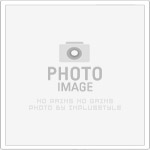Among the many forms of fabric decoration, the embroidered patch remains a standout classic that continues to evolve with time. Whether displayed on a jacket, uniform, cap, or bag, embroidered patches provide a unique combination of texture, detail, and durability—making them a favorite for military units, clubs, businesses, and fashion designers alike.
In this article, we explore what makes the embroidered patch so iconic, its construction, uses, and the reasons behind its lasting popularity in both traditional and contemporary applications.
What Is an Embroidered Patch?
An embroidered patch is a fabric emblem created by stitching colored threads onto a base material—usually twill or felt—to form a raised, decorative design. These patches are often backed with materials like plastic, iron-on adhesive, Velcro, or plain fabric, making them easy to attach to clothing and accessories.
Unlike printed patches, embroidery adds a textured, 3D feel that not only stands out visually but also adds tactile richness. The technique emphasizes craftsmanship, depth, and bold contrasts, making embroidered patches an ideal medium for logos, insignias, and decorative art.
A Brief History of Embroidered Patches
The tradition of embroidery dates back thousands of years, with early forms found in ancient China, India, and Egypt. However, the embroidered patch as we know it became widespread in the 19th and 20th centuries, particularly for military and industrial use.
In the military, patches were used to indicate rank, unit, and special achievements. Civilian applications soon followed, with motorcycle clubs, scouting organizations, emergency services, and schools adopting embroidered patches to display identity, affiliations, and pride.
Today, the embroidered patch is as relevant as ever—combining artisanal detail with modern technology for endless customization.
How Embroidered Patches Are Made
Modern embroidered patches are created with a combination of digital technology and high-speed embroidery machines. Here’s a simplified breakdown of the process:
-
Design Digitization: The artwork is converted into a digital embroidery file using specialized software that determines stitch type, direction, and sequence.
-
Material Selection: A durable fabric such as twill or felt serves as the base for the patch.
-
Thread Embroidery: Embroidery machines stitch the design onto the fabric using polyester or rayon thread. Different thread thicknesses and colors are layered to create the finished look.
-
Finishing: After embroidery, the patch is cut into shape using laser or die-cutting techniques. A backing is then applied, such as iron-on adhesive, Velcro, or plastic for durability.
-
Bordering: A merrowed (overlocked) or heat-cut border is added for a clean, professional edge.
Each embroidered patch reflects precision, creativity, and a touch of tradition—all rolled into one.
Common Applications of Embroidered Patches
Embroidered patches are used across various industries and cultures due to their flexibility and durability. Here are some of the most common applications:
• Military and Tactical Gear
From unit insignias to name tags, embroidered patches play a vital role in military identity and professionalism.
• Police, Fire, and EMS
Public service uniforms often feature department logos and badges in the form of high-visibility embroidered patches.
• Corporate and Workwear
Businesses use custom patches on uniforms and branded apparel to promote their brand and maintain a professional appearance.
• Fashion and Streetwear
Designers incorporate embroidered patches into jackets, hats, jeans, and backpacks to create edgy, retro, or artistic fashion statements.
• Motorcycle Clubs
MC patches are among the most iconic embroidered designs, featuring club names, chapters, and symbolic artwork that represent loyalty and brotherhood.
• Scouting and Youth Programs
Boy and Girl Scouts worldwide earn embroidered patches as rewards for achievements, milestones, and participation.
• Events and Collectibles
Patches are also created as souvenirs or limited-edition collectibles for conventions, concerts, sports events, and festivals.
Why Choose Embroidered Patches?
There are many reasons why embroidered patches remain a top choice for custom branding and decoration:
-
Professional Appearance: Embroidery adds dimension and depth, making designs look rich and high-quality.
-
Durability: Embroidered patches are resistant to washing, sunlight, and general wear, especially when applied correctly.
-
Customizability: From colors and shapes to borders and backings, nearly every aspect of an embroidered patch can be tailored to your vision.
-
Affordability in Bulk: Patches become more cost-effective with larger orders, making them ideal for organizations and brands.
-
Symbolic Value: Patches often hold sentimental or symbolic meaning, especially in military, sports, or cultural groups.
Design Tips for Custom Embroidered Patches
When designing your own embroidered patch, it helps to consider the following tips for optimal results:
-
Use Bold, Clear Lines: Embroidery works best with solid shapes and defined outlines. Intricate details may get lost, especially at small sizes.
-
Limit Colors (5–9): While you can use many thread colors, limiting your palette helps keep the design clean and cost-effective.
-
Choose the Right Size: Think about the placement of the patch (e.g., chest, sleeve, back, hat) and design accordingly.
-
Add a Border: A merrowed or stitched border not only improves aesthetics but also strengthens the edges and prevents fraying.
-
Back It Properly: Consider where the patch will go—is it a jacket (iron-on), a tactical vest (Velcro), or a bag (sew-on)? Choose accordingly.
Different Backing Options for Embroidered Patches
Choosing the right backing can make all the difference in how your patch performs:
-
Iron-On: Easy to apply with heat; great for casual or fashion use.
-
Sew-On: Permanent and strong; ideal for high-wear items.
-
Velcro: Removable and reusable; popular for military and tactical gear.
-
Adhesive: Stick-on backing for temporary applications like events or displays.
-
Plastic: Adds stiffness and durability to the patch, regardless of how it’s applied.
Conclusion: A Patch That Tells Your Story
An embroidered patch is more than just a decoration—it’s a statement of identity, creativity, and pride. Whether you’re representing a cause, a company, or your own personal style, an embroidered patch can speak volumes without saying a word.
With their rich history, classic craftsmanship, and modern appeal, embroidered patches remain one of the most trusted and admired forms of textile embellishment in the world. If you’re looking to create lasting impressions—on uniforms, fashion items, or collectibles—there’s no better place to start than with a custom embroidered patch.



 支票借款撥款速度快
支票借款撥款速度快